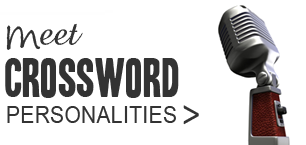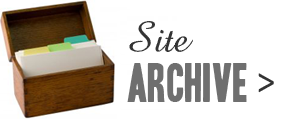
We may complain about too many anagrams, CDs or DDs, but how many is too many?
Before I put this question to you, I put it to myself and tried to come up with numbers for at least the contentious clue types. I soon realised that while solving, my idea of balance in clue types stems from more than count.
If there are 4 15-letter words in the grid and all of them are anagrams, my senses say "too many" even if those are the only anagrams in the grid.
3 deletions consecutively seem like a lot more than 4 deletions in clues far apart.
Some solvers (famously Colonel Gopinath) dislike CDs/DDs and will probably not miss them if they disappear altogether. I love a good CD and if they're distributed around the grid, I'm happy with half a dozen CDs in a puzzle. At the same time I usually find CDs hard to solve without crossings and will object if 3 of them intersect.
Tim Moorey's How To Master The Times Crossword covers some tips for solvers about the number of clues to expect for certain clue types in the Times crossword: "There may be no hidden clue in any one daily puzzle and rarely more than one" [p64], and similar such for anagrams.
The tips in the book are worded as approximations and not rules.
All in all this looks like a fuzzy area based on taste/perception and I'd like to open the floor for discussion.
Questions for setters:
Do you follow guidelines set by the paper or do you have your own working style in choice of clue types? Do you consciously keep track of the number of clues of each type and make an effort to moderate them?
Questions for solvers:
What is the ideal clue type distribution for you? Does an excess of some clue types invite your wrath more than others?
Related Posts:
- Ask the readers: Should posthumous puzzles get published?
- The Hindu Crossword compilers: Your views?
- Poll: Should Neyartha use fewer "GK words"?
If you wish to keep track of further articles on Crossword Unclued, you can subscribe to it in a reader via RSS Feed. You can also subscribe by email and have articles delivered to your inbox, or follow me on twitter to get notified of new links.








 Follow on Twitter
Follow on Twitter Join us on Facebook
Join us on Facebook Get RSS
Get RSS

12 comments
Hi Shuchi
For starters, does a batsman walk out to play with an estimate of the number of cover drives he should play?
- The Venn diagram you have drawn seldom comes into play in practice. Many clues use a mixture of the basic wordplay types shown there. Setters have a list of tools for making wordplay; it is the nature of the words in the grid which dictates the wordplay and the clue-type. An obscure word (in the estimate of the setter) demands a "whole" anagram - you can't write CDs for that!
- CDs and &-lits require a lot of skill; forcing them on a word which can't have one will make for an awful clue. Having a counter for them will only be "counter"-productive.
- Homophones can't be more than two or three - there are not a lot of indicators; besides, they are often troublesome due to dialectic reasons.
- This puzzle of Brendan has 13 containers, but the clues are so smooth that this is not at all obvious. Therein lies the skill - writing smooth clues in such a way that noone will care to count.
- It is entirely possible (though not always) to write an anagram or telescopic clue which solvers cannot pick. The "jumble-me-now" anagrams and obvious "hidden"s (aka starter clues) are the only ones that need to be counted and kept to a minimum.
Also, I can only envisage three situations where solvers will bother to count clue-types:
1) The solver turns a blogger who attempts a threadbare analysis of the puzzle, like duncanshiell in the above example.
2) The clue surfaces are so jarring that you can't help "Ctrl+F"ing to count the number of asterisks or [T]s for example, just to figure out what went wrong in there.
3) The solver is a weird researcher/statistician who wants to study the probability distribution over clue-types in crossword puzzles!
For me, there isn't a "set" proportion that makes an ideal mix of clue types. Some say more than four or five anagrams in a 15x15 is too much, but if they're well disguised or entertaining I'm usually OK with a few more. If I find a few of the same clue type bunched together in my own setting, I'll either rotate the grid to mix up the distribution, or if that's not possible (maybe because one clue must be an across or down clue), I'll try to make up for it with deceptive or entertaining clue-writing. Authors should definitely use hidden words sparingly, and also avoid DDs and homophones that cross each other.
I'm hardly a cryptic crossword connoisseur like many readers of your blog, and more of a regular newbie who enjoys the thirty minutes he gets with THC every day.
My thirty minutes is usually the time I have between rushing out of the house and court sitting on the average day (or the extra half hour's indulgence I get on days that court doesn't sit and I only need to be in the office/chambers). In this time, I'd like a crossword that challenges me sufficiently to get the brain cells fired up without making me tediously jump hoops.
A good collection of clue types for me will be some mix of those which are easy to crack, many which require reading the clue from three or four different angles, and a few fiendish ones which when I crack I feel satisfied of having met an actual challenge. I think this is why I like Neyartha, Sankalak, Cryptonyte and Mover set puzzles best.
I know some people have a problem with too many anagrams but I think anagrams also differ in difficulty so I don't mind anagrams if they are varied in challenge.
Hi... Please read pie-chart in place of Venn diagram; that was poor :(
I'd like to make another point: setters have multiple constraints while writing clues - good surface, proper grammar being the two most important, IMHO.
Instead if a setter priortises clue-type distribution over those two constraints, either of the two has to be compromised somehow. The choice of the constraint to be relaxed solely rests on the setter's discretion.
Such a difficult one to answer. What’s good for one solver may be (probably will be) inadequate for another, and setters can’t do their work with an entire solvership in mind. Ultimately it should be the editor who says a crossword has too much of this or not enough of that. The Times has specific limits for the number of full/part anagrams and hidden answers, but nothing really beyond that, and other editors tell me they only ask setters to redress a ‘too many’ imbalance if that imbalance shouts at them when they test solve.
Of far greater concern to editors is the level of difficulty. They know – as setters do – that an imaginative and entertaining EASY crossword is harder to set than a difficult one, so generally it is the editor’s existing stock of puzzles which suffers imbalance, with not enough easier puzzles to spread through the series, rather than an individual crossword.
And for me? At one time I saw anagrams for long answers as a desperate measure when I couldn’t think of a good CD (traditional wordplay breakdowns become rare opportunities as answer lengths increase) but I’m far less concerned now. Because shorter answers will give me plenty of scope for adventure and (fingers crossed) innovation, I see the long lights as having great potential for starter clues.
I must be going soft.
Loving your responses.
@Scintillator: I can see where you're coming from and I agree the choice of clue type is a function of the word being clued; imposing some sort of checklist for clue type counts can be severely limiting. Totally with you on CDs and &lits.
At the same time I think a lack of variety in wordplay can make the crossword predictable and dull. Most words in the grid are not so rigid as to dicate the clue type entirely - words can be clued in multiple ways. Supposing the setter sticks to 3-4 clue types only, puzzle after puzzle, it's going to reduce the element of surprise for the solver. This does get offset considerably if the setter has a special talent for certain clue types. It'd be a shame if Rufus had to limit his CDs or Textrous his anagrams, to meet some clue type count requirements.
Not wholly convinced about the batsman analogy. A batsman's shots depend on the opponent's play and he has only a moment to respond to the ball. His prime objective is to score/retain his wicket, not to entertain the audience. A crossword setter has a far more time and scope to choose clue type, and his prime objective *is* to entertain the audience.
While I don't exactly count clue types, I confess I catch on to patterns without conscious effort - weird researcher / statistician in the head, perhaps :-).
@Chesterley: Like your approach. And your crosswords :-)
@Alok: It's great to hear from new solvers, thank you. Anax's comment ties in with yours - crossword editors too care more about the mix of clue difficulty than of clue type.
What if a clue type like deletion goes missing from the crossword for days together - will you notice? Does your answer change for different clue types, like anagrams or hidden words?
@Anax: I can identify 100% with the sentiment of 'imbalance shouts at them'. It must be very helpful to have that feedback from the editor.
From now on I'm going to first attack the long lights in your fiendish puzzles!
As the responses above indicate, different setters have different opinions about the distribution of clue types.
As a setter, my intent is to first ensure that a given crossword has at least one instance of each clue type. Note that &Lits are not possible in all grid fills. So, I usually leave that out of my list when considering clue type distribution.
Certain clue types are comparatively difficult to write, and, as Scintillator mentions in one of his comments above, it is just not possible to force a word to be clued with a particular clue type. With this constraint, I first start off by trying to use up the more difficult clue types first. The order in which I go about the compilation is as below. The number at the end of each clue type is the (maximum) number of instances of that clue type that I would like the puzzle to have:
Cryptic Definitions : 2
Double Definition : 2
Homophone : 2
Telescopic : 2
Substitution : 2
Reverse : 4
Acrostic : 1
Shift : 1
Deletion : 4
Anagram : (10)
Charade : (10)
Embedded / Container : (10)
Easy : (1)
Note that a single clue could potentially use multiple wordplay types, and it would be counted once against each clue type. For example, it is almost impossible to have 4 purely deletion-type clues in a given puzzle, and I often mix it up as augmented anagrams. By the time I finish up with the first 9 clue types, my Anagram / Charade / CC count goes something like 3/3/3 or 2/3/2 or something similar. As I proceed to wrap up the puzzle, I make sure that the three counts stay as close to each other as possible.
Hopefully, solvers of my puzzles have never been overwhelmed by a marked leaning towards any particular clue type (Though I have often ended up with counts like 4/5/6 at the end of the compilation process).
From a solver's perspective, I have found puzzles to be a downer only if they have a large number of 'Easy' clues. Otherwise, I personally don't care about the clue-type distribution, but I definitely respect the opinion of others in this matter (which is why I take some effort to maintain a balanced distribution as a setter).
@Shuchi: I loved the other comments too :)
To elaborate on the analogy, I see this sequence with crosswords: setter->grid->newspaper->solvers. The entertainment part, though necessary, is not totally in the setter's hands due to the intermediate interfaces. For eg, I find it impossible to predict even how someone like Col Deepak will fare with my clues, though he solves them everytime. Numerous random factors (the solvers' ability and aptitude, the time they could afford, their experience and familiarity with a particular wordplay, their mood on that day and so on) affect how much a solver enjoys a crossword - as you would guess, none of these can be managed by the setter. (Note the variation across two axes: solver and time.)
Instead what is in the setter's control is the word in his own grid and the clue for it. A batsman has "only a moment to respond to the ball", as you say, and setters have only a precious few minutes to spend on each clue. Our opponents are the words in our grids - words like LYNX may turn out to be yorkers for us!
Personally, in those minutes that I get, I focus on objective constraints and write the best possible clue for a word. After completing the puzzle, I return back, run through the clues to find if there is a blatant "samey-ness" and inscrutability to the clues and try to modify them appropriately.
This method works best for me, and I do not want to dilute the difficulty beyond a level. After all, what's a "puzzle" that does not puzzle solvers? :)
Also there is another facet to the "entertainment" point of yours. (sorry for cluttering this thread.)
From the solvers' viewpoints, they may have their fave setters, but from the feature's perspective, variety is the key. As long as there are no objective errors, nothing forbids setters from sticking to their own individual styles (in a THC setup, that is). In that sense, setters have to be selective in addressing solvers' concerns: whimsical or unjustified comments are best ignored.
Hi Shuchi,
Now that I've got two MID's let me put in my two bit.
As already brought out by you and reinforced by Scintillator, I for one am not a great fan of CD's, but I am not averse to appreciating a good one. Too many CD's make me want to pull my hair out trying to get a foothold, as you know I have a deadline to meet. Of late this has got compounded due to the late uploading of the online edition and the glitch in the THC app on Orkut, so I have to draw out the grid daily, my paperwallah drops in only by 7:30.
As regards the other clue types a good mix of them without too many anagrams is fine with me, I wouldn't mind charades in excess.
Just read all the comments from the setters and solvers and may I say, the experts. To me, a cryptic puzzle is a brain-teaser and I had not even learnt the various annotations that appear in the HCCorner, to which I'm a Johnny-come-lately. I enjoy all puzzles , including the ones by NJ who has been a target (though unfair) of many solvers including me.
Analysing the distribution of clues formed is an overkill. One has to remember that a setter is indeed a creative artist and one has to respect that a work of art should be enjoyed for its creativity and the trouble taken by the setter, who has a very arduous task of literally converting his ideas into clues. A tough task indeed !! One can always say, a daub here or a smudge there would have been better but the artist who has created his work needs to be respected for his piece. Rest is all aesthetic, fudge, may I say?
Post a Comment